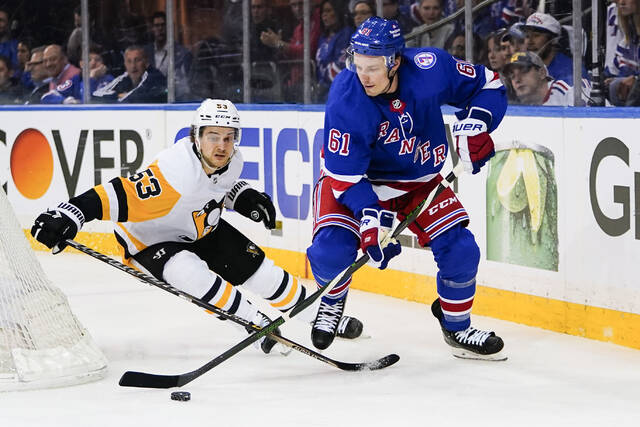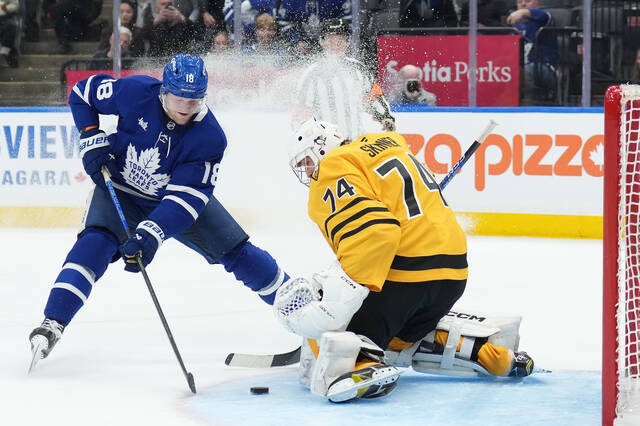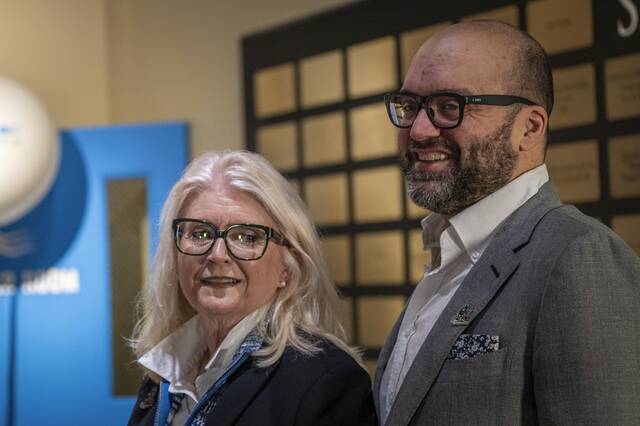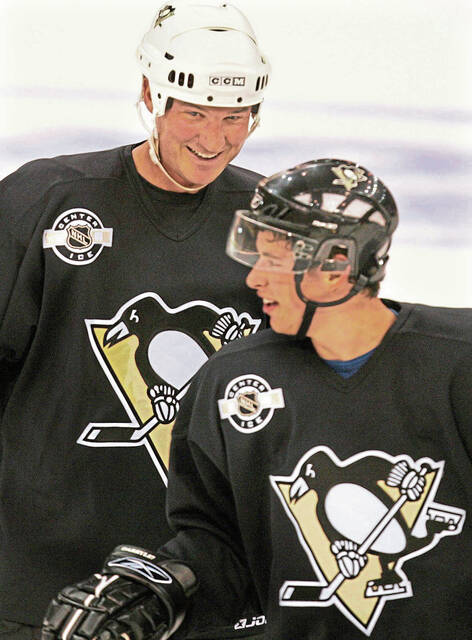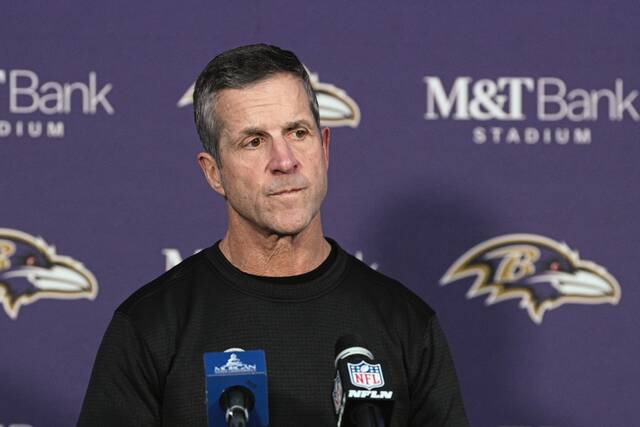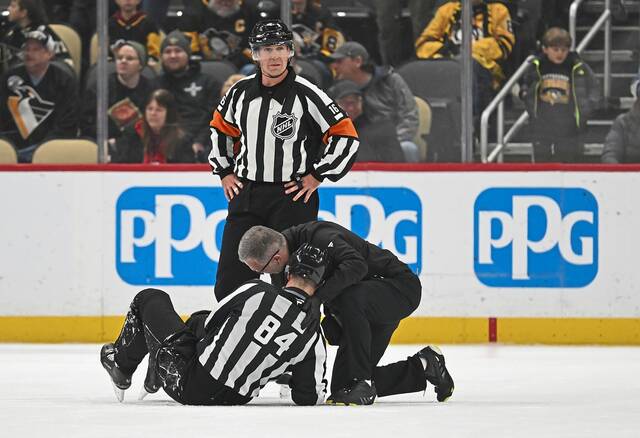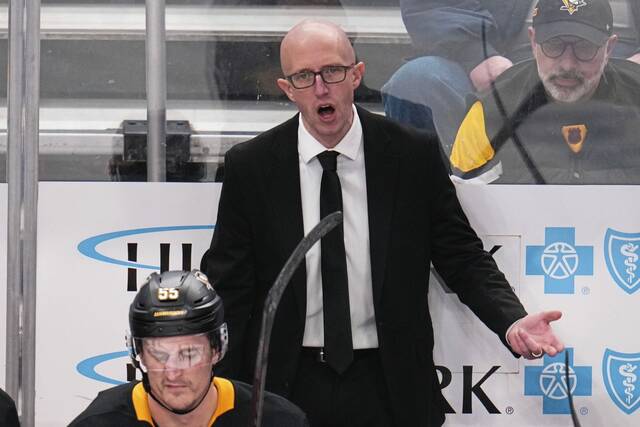Statisticians will say reading too much into a small sample sizes is folly. But when it comes to the recent performance of the Pittsburgh Penguins penalty-killing unit, coach Mike Sullivan isn’t going to let its failures attribute to math.
“No,” Sullivan said Friday when it was posited that a recent spate of opponent power-play goals was merely a case of bad luck. “I don’t think we’ve been as good.”
To be fair, it would be difficult to maintain the pace of being “as good” as the Penguins were over the first 78 games of the regular season. Their 86.4% penalty-kill rate was contending for the best in the NHL and flirting with a franchise record for a season.
But by the time the New York Rangers’ Ryan Strome scored early in the second period of Game 2 of the Penguins’ first-round playoff series Thursday night, that seemed like a distant memory.
It marked the sixth consecutive game (four during the regular season) the Penguins allowed at least one power-play goal. Before this stretch began, opponents hadn’t even put together a collective streak of more than three consecutive games with a PPG.
“I think there have been some bad bounces, some mistakes on our part, bad reads,” penalty-killing center Teddy Blueger said Friday. “Different things like that hurt, along with some bad exaction.
“But sometimes that’s how it goes, and you’ve got to work at that and get back at it, and we will make our adjustments and go from there.”
When Strome scored, that was an opponent’s eighth goal over a span of 16 power-play opportunities against the Penguins.
For an illustration of how bad that is and how superb the Penguins’ PK was early in the season, consider that it took 87 opponent power-play tries over 35-plus games to open the season before the Penguins allowed eight power-play goals.
“I think our penalty kill is at its best when we win faceoffs (because) we get 200-foot clears,” Sullivan said. “Get the puck down the ice, make the entries difficult. And when you can do those three things really well, you limit zone time.
“One of the challenges we’ve had to this point with respect to the Rangers is we haven’t won a lot of faceoffs. We haven’t got a lot of clears, and so they’ve had a significant amount of zone time and they are a talented group. Those are just a couple areas where we can get better at.”
The Rangers had the NHL’s fourth-best power play during the regular season (25%) and feature the league’s individual leader in power-play goals, Chris Kreider (26).
If there’s any consolation in the series, it’s that the Penguins have been disciplined in avoiding taking penalties. But in the 6 minutes, 19 seconds they have been a man down, the Penguins have allowed two goals, 10 shots on goal, 17 attempted shots and nine scoring chances (per naturalstattrick.com).
“We have to improve and get better at it,” Sullivan said. “That’s on the coaching staff. We’ve got to give these guys a gameplan that helps them have success. We’re going to go to work to try to do that. It boils down to a lot of things. A lot of it is the details.”
Note: The NHL announced a 7 p.m. faceoff time for Game 5 in New York. Each of the series’ first five games has had the same announced start time.


